Why Shockey?
Common (good) + unity = community
Case Studies
We’re proud of our community partnerships. Read on to learn more about how we work.
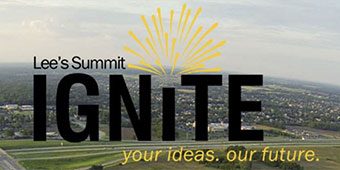
Igniting a Community
The City of Lee’s Summit, Missouri recently adopted their Ignite! Fuel Our Future Comprehensive Plan, an innovative, future-forward plan developed by Shockey Consulting, along with our partners Stantec, Bartlett & West, and Robert Lewis.

The new comprehensive plan articulates the community’s goals, policies, local actions, and design guidelines to pilot the city’s physical development and programs over the next 20 years. It serves as the basis for economic development, quality residential growth, and general improvements to maintain a high quality of life for everyone in Lee’s Summit into the future. The comprehensive plan aligns with the community vision and critical success factors developed during the preceding Ignite! Strategic Plan. Shockey went above and beyond a traditional market analysis approach and developed an innovative fiscal impact model to evaluate the benefits and costs of various land use scenarios, including capital and operational expenses related to infrastructure, facilities, and other capital investments. The results determined the feasibility of potential scenarios and inform the prioritization of recommendations.
Getting community feedback
To ensure all voices were heard, the Shockey team carried out a meaningful and inclusive community engagement process to gather feedback on the community’s vision, aspirations, and hopes for the future of Lee’s Summit. Despite the challenges associated with engaging the public during the COVID-19 pandemic, the Shockey team offered multiple opportunities and pathways for the public to participate (safely) and gathered diverse input on a range of important community topics. Traditional in-person engagement opportunities pivoted to online digital engagement tools and virtual stakeholder meetings. Engagement activities included an interactive project webpage, online surveys, meetings with the City Staff Steering Committee, stakeholder interviews, virtual community workshops organized by geographic area, City leadership workshops, topical focus groups, community group presentations, community education through a Strategic Foresight Hub, and communications updates.
The planning process involved a review and alignment of existing plans and policies, an extensive and collaborative effort to engage the public and key stakeholders, the establishment of future development and redevelopment policies, a fiscal impact model to ensure financial sustainability well into the future, the identification of priorities to support the community’s long-term vision, and an action plan to support the City’s implementation.
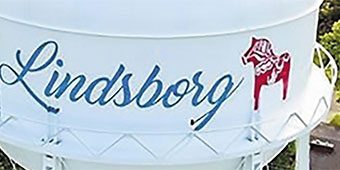
How Little Sweden USA Planned for Both a Pandemic – and 2040
Lindsborg officials had been preparing to launch a collaborative planning process aimed at ensuring a bright and unified future for this central Kansas city known as “Little Sweden.” With an eye on 2040, officials were thinking about long-term goals and policies. Then the pandemic hit and 2040 no longer seemed like the most pressing concern. With the help of Shockey Consulting, city officials pivoted to address the immediate challenges, hoping to ensure Lindsborg remained resilient and prosperous in the face of COVID-19.
Pivoting in the pandemic
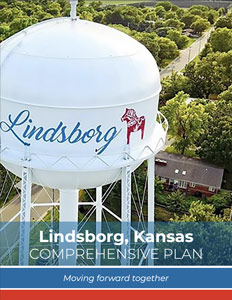
To address short-term needs and help Lindsborg weather the ramifications of COVID-19, Shockey Consulting and the City of Lindsborg adapted both a three-year Strategic Plan and a 20-year Comprehensive Plan.. A Strategic Plan developed simultaneously with the Comprehensive Plan addressed the community’s short-term needs in response to the COVID-19 pandemic as well as other fast-paced demographic, economic, social, and industry shifts.
The pandemic presented a unique opportunity to pivot from planned in-person events to a fully immersive online engagement platform. The planning team developed the Future Lindsborg project site where residents and stakeholders could access up-to-date project information and participate in ongoing online activities, including surveys, mapping tools, ideation forums, and quick polls. The digital engagement platform resulted in greater and more diverse participation than previous traditional planning processes in Lindsborg with over 384 residents participating in online activities 11% of the population.
Moving forward – with the past
 With Lindsborg’s strong ties to Sweden, the Dala Horse was adopted as Lindsborg’s community identity icon and welcome symbol. The planning team created yard signs in the shape of Dala Horses to distribute throughout the community to promote the Comprehensive Plan and encourage residents, business owners, and visitors to participate online.
With Lindsborg’s strong ties to Sweden, the Dala Horse was adopted as Lindsborg’s community identity icon and welcome symbol. The planning team created yard signs in the shape of Dala Horses to distribute throughout the community to promote the Comprehensive Plan and encourage residents, business owners, and visitors to participate online.
Two clear themes emerged:
- Diversity and Inclusion matter. Residents discussed how to honor Lindsborg’s Swedish heritage while creating a welcoming and inclusive community.
- Sustainability matters. In fact, residents discussed exploring accessory dwelling units and tiny homes as a way to promote sustainable growth.
The result
The City unanimously adopted the comprehensive plan in April 2021, framing it as a living document that will be examined and updated as needed each year.
The City’s common vision:
In 2040, people choose Lindsborg, Little Sweden USA, a welcoming, diverse and sustainable community with a high quality of life where we embrace the arts, innovation and lifelong learning so everyone can flourish.
Lindsborg is home.
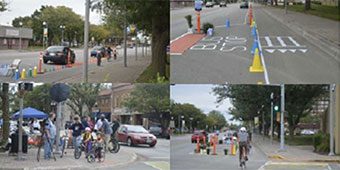
Engaging on the Street
The city of North Kansas City, Missouri sought a vision for commercial corridor Armour Road that would be safe, sustainable, visually appealing, and economically vibrant. Working with the city and partners, Shockey Consulting created stakeholder engagements to help realize that vision.
 Watch a video about the project >
Watch a video about the project >
The Armour Road Complete Streets Plan was created to transition Armour Road to a complete street that serves vehicles, bicycles, pedestrians, and transit riders using the existing right-of-way.
Shockey Consulting, a sub-consultant to WSP, led a robust public engagement process, including extensive stakeholder identification and outreach and the facilitation of public meetings, focus group meetings, and steering committee meetings. Stakeholder outreach involved the development and distribution of Meeting-In-A-Box tool, as well as on-site outreach with walking tours. As part of a public meeting, Shockey helped plan and facilitate a pop-up demonstration project, which won the Missouri Municipal League’s Innovation Award.
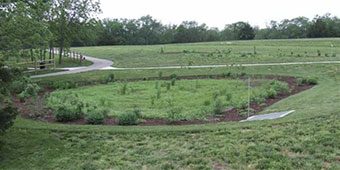
Turning Rain to Recreation
In the late 1990s, Lenexa began developing a new, innovative approach to managing stormwater, which stemmed directly from the city’s community-visioning process, Lenexa Vision 2020. Shockey Consulting collaborated with the Public Works Department to develop the innovative Rain to Recreation program.
Community Drivers
While Lenexa generally does not have major flooding problems, a severe flood that hit the metropolitan area in October 1998 – one of the worst in the area’s history – as well as new requirements imposed by the National Pollutant Discharge Elimination System (NPDES) Phase II of the Clean Water Act, reinforced the importance of the community’s vision and the city’s efforts.
Approach
As Lenexa began to develop its new watershed management program, city officials and staff took a hard look at the way the city had been doing business. Lenexa wanted to learn from previous mistakes and find a better way to manage stormwater, particularly as new development accelerated to the west. In the past, Lenexa looked at stormwater in the traditional way as a problem that needed to be moved away quickly. Like many other cities, Lenexa moved stormwater by collecting and channeling it through gutters, boxes, pipes, and culverts. But in some areas, this led to localized flooding, erosion, and massive stream degradation, which was expensive to repair.
In its new approach, Lenexa began looking at stormwater as a community asset and a valuable resource rather than a problem, and thus created “Rain to Recreation.” The goals of Lenexa Rain to Recreation are to reduce flooding, protect water quality, natural habitat and the environment, and provide new recreation and education opportunities for the community. Sheila Shockey was hired by Ron Norris, Public Works Director at the time and the force behind this new approach. She spent a little over a year working onsite as part of the team that developed the Rain to Recreation program.
The promise of Rain to Recreation was that Lenexa would reduce flooding by building new lakes, detention basins, wetlands, streamside parks, and trails that would provide recreational enjoyment, as well as provide numerous educational programs to increase community awareness of water quality issues.
Public Education – Rain to Recreation
While developing this new initiative, the Governing Body and staff understood that it was vital to communicate with all of the city’s audiences. The city would need support from many different groups including the business community, development community, the media, and neighboring cities and the county because the plan was to take a regional watershed approach to managing stormwater. Lenexa sits on four watersheds, which are shared with neighboring communities. Equally as important, it was critical that Lenexa had the support of the citizens, who would be asked to help pay for the initiative with a one-eighth cent sales tax increase. In 1999, the city conducted a citizen survey to gauge the community’s willingness to pay for a watershed management program. Eighty percent of the respondents said they were willing to pay and interested in water quality as it relates to the quality of life.
The message for the various audiences was complex. This type of approach to stormwater management was not common in 2000, and it would be challenging to generate understanding and buy-in from all the stakeholders. Great effort was made to communicate with the many stakeholders, including numerous meetings and public speaking engagements by then Mayor Joan Bowman and members of a citizen support group to the economic development council, media editorial boards, chamber of commerce, development community, civic groups, PTAs, church groups, and neighborhood associations. Sheila was responsible for developing and driving this outreach program.
Funding
In August of 2000, citizens were going to be asked to help fund the Rain to Recreation initiative by voting for a one-eighth cent sales tax increase. A great deal of effort was already going into communications with the public; but because it was so important to gain citizen understanding and support of Rain to Recreation, the city decided to play to one of its strengths, and came up with a fun and innovative way to communicate the new initiative with citizens.
Each year, Lenexa hosts tens of thousands of people at annual events including the Great Lenexa Barbeque-Kansas State Championship, Community Days events including the Freedom Run, July 4th parade and fireworks, Spinach Festival, Chili Challenge, Enchanted Forest, and Old Town Lighting Ceremony.
So, in 2000, when Lenexa needed a way to communicate with citizens about the new Rain to Recreation initiative and the money that would be needed to fund it. Sheila came up with the idea of a Waterfest and worked with the incredible parks and recreation staff to hold the event.
Waterfest!
Waterfest is a unique public outreach effort that supports the Rain to Recreation concept of raising public awareness of water quality and stormwater issues by bringing neighbors together for family fun and community spirit in a festival setting. Waterfest, a free event targeted at Lenexa citizens and families, offers numerous interactive, educational booths, as well as many water-related activities including paddle boats, canoeing, cane-pole fishing, waterslides, wacky water games, children’s fishpond and duck pond, and the like. The city also offers entertainment such as presentations by Operation Wildlife, “Green E,” the environmental Elvis who performs songs with an environmental message put to tunes of favorite Elvis hits, and a local band called “Rain Dogs.”
When organizing Waterfest, Lenexa set out to achieve the following goals:
- Create a unique event that would attract Lenexa citizens, particularly families with children, to learn about the importance of the city’s innovative Rain to Recreation initiative and the funding that would be necessary, as well as a variety of water quality, stormwater and other environmental issues.
- Provide a fun and festive atmosphere for neighbors to gather and enjoy water-related activities and celebrate water as a community asset.
- Partner with various environmental groups who would provide interactive, educational booths about water quality and stormwater management and further support the city’s watershed management initiatives.
- Provide a venue for soliciting public opinion on project elements including park facilities
Lenexa’s Rain to Recreation Waterfest was successful in the following ways:
- The first Waterfest was held in July 2000, prior to the election in which citizens were asked to approve a one-eighth cent sales tax increase to assist in the funding of Rain to Recreation. Waterfest served as a communications tool that was coordinated with other communications efforts regarding the need for Rain to Recreation. The sales tax was approved by an overwhelming 78-percent margin.
- Waterfest was so well received, the city decided to make it an annual event, which now attracts several thousand citizens each year. At the event, the city receives valuable input from citizens about the city’s Rain to Recreation efforts, and has the opportunity to demonstrate how funds are being used toward vital projects.
- The city has been able to keep costs down in several ways including:
- Securing federal water-quality grant money administered through Kansas Department of Health and Environment
- Partnering with local businesses to provide food and other items
- Promoting Waterfest through numerous communications tools already in existence to cut down on promotion costs
- Each year, Waterfest continues to draw media attention. The promotion and coverage adds to the positive message citizens receive about the city’s efforts to deal with stormwater issues and protect water quality, whether or not they attend the event
- Lenexa partnered with various environmental and civic groups concerned with water quality and environmental issues. Some of the groups that have participated by hosting booths at Waterfest include: Johnson County Household Hazardous Waste program, Johnson County public Works and Wastewater, Blue River Wastershed Association, Kansas Alliance for Wetlands and Streams (KAWS), Project WET, Sierra Club, Mid-America Regional Council, US Army Corp of Engineers, EPA Region 7, Grow Native-Missouri Department of Conservation, Kansas Wildscape Foundation, Habitat for Humanity’s ReStore, Operation Wildlife, as well as the city’s Rain to Recreation watershed management division and the city’s Parks and Recreation Department.
- The city’s Rain to Recreation initiative and Waterfest have served as models for other communities locally and throughout the country.
Waterfest, is an annual event that continues to provide an important outlet for the city to fulfill its Rain to Recreation mission of public education and outreach to increase awareness about water quality issues, solicit citizen input, provide water quality-sensitive alternatives to common behaviors, and inform citizens of the city’s efforts to address flooding problems.
Continued Community Support
In 2004, citizens were asked to renew the one-eighth cent sales tax increase for an additional five years, which would fulfill the 10-year funding plan necessary for Rain to Recreation. The annual Waterfest was again an important tool that was used in coordination with other communications efforts – including a speakers’ bureau and Rain to Recreation video sent to homes associations and other groups in the community – to inform citizens about the city’s Rain to Recreation progress. Since Lenexa’s first Waterfest and successful passage of the sales tax increase, Lenexa has completed its first two regional lakes, which provide regional retention in the developing part of the community, and very soon will offer new opportunities for education and recreation. In the 2004 election, citizens once again passed the tax increase by a 78-percent margin. Shockey Consulting Services was hired back again to help educate the public about the importance of funding this program.
Outcomes & Accomplishments
Shockey Consulting developed the long-range financial model for the program, developed the organizational structure, assisted with hiring staff, prepared ordinances to implement best management practices, developed the business plan and then updated it once the program was underway and operating. As a result of this work, capital projects were designed and implemented to address problems and create recreational amenities as promised.
Problems Addressed
Lenexa completed or has projects underway for all known flood control and stream bank erosion problems.
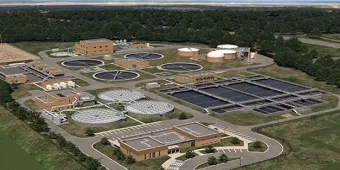
Rebuilding for the Future
Johnson County Government’s largest-ever infrastructure project to date isn’t glamorous but it's essential - transforming a 1950’s era wastewater treatment plant into a modern facility. Partnering with Black & Veatch and HDR, Shockey Consulting ensured the community was engaged in the process by managing all public outreach efforts, keeping residents of the community informed and engaged.
Johnson County Government’s largest-ever infrastructure project to date isn’t glamorous but is essential – transforming a 1950’s era wastewater treatment plant into a modern facility. Partnering with Black & Veatch and HDR, Shockey Consulting ensured the community was engaged in the process by managing all public outreach efforts, keeping residents of the community informed and engaged.
From the 1950’s to the Future
Rebuilding the Tomahawk Creek Wastewater Treatment Facility took four years, nine miles of underground utilities, 50,000 cubic yards of concrete and nearly 800 drilled shafts. Yet for users at home, the transition was seamless. The Tomahawk Creek Wastewater Treatment Facility was an aging and outdated facility whose growing treatment needs exceeded its capacity, forcing overflow from Kansas into Missouri for treatment. The prospect of sustaining the current facility presented sustainability issues including rate increases to replace outdated assets and equipment, in addition to stricter limits on toxic discharge. Seeking an effective solution to treating the wastewater, JCW hired consultants to study alternatives for the treatment facility over the next 25 years. A new facility expansion to treat all flows was selected as the preferred alternative, providing the most cost-effective, long-term solution for customers.
Engaging the Community
Shockey Consulting managed the public outreach for the design phase of the Tomahawk Wastewater Treatment Plant. Shockey developed a plan document that defined the engagement goals, objectives, key messages, target audiences, tools, methods and schedule. Shockey’s responsibilities included informing nearby residents about the expansion and/or improvements needed at Tomahawk Wastewater Treatment Plant, its process, and potential disruptions. Shockey coordinated the property owner notification required by the City of Leawood for the Planning and Development process and planned and facilitated two public meetings to share information and gather input from those impacted by the Tomahawk Wastewater Treatment Plant. By creating a website and integrating it into the communication strategy as a portal for community awareness, Shockey was able to establish transparency for the project and keep residents and businesses informed throughout the design and construction of the project. Shockey also coordinated the ongoing communications team, including county representatives, multiple cities, and construction and engineering teams.
Coming to Life
The expansion began in April 2018 with major construction completed in mid-2022. The long-term infrastructure investment utilizes the latest proven technologies, protects the environment, and improves water quality in Indian Creek and for downstream communities.
